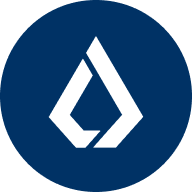The gaming industry has been at the forefront of embracing blockchain technology, constantly seeking new avenues for expansion and innovation to enhance gaming experiences. As blockchain technology emerged and explored new possibilities, the gaming sector eagerly embraced its potential.
The integration of blockchain with gaming led to the emergence of innovative concepts such as the metaverse, non-fungible tokens (NFTs), and GameFi. These developments have opened up new opportunities for gaming enthusiasts and developers alike. Projects like BORA (BORA) have specifically focused on leveraging blockchain technology to cater to the gaming and entertainment sectors.
What is BORA?
BORA is a decentralized ecosystem dedicated to the entertainment and gaming industries. Its primary objective is to attract game developers and various applications within the GameFi sector to its network.
Additionally, BORA offers developers and content creators the necessary infrastructure to manage and retain users effectively. This infrastructure includes integrating the Bora point system, which seamlessly interacts with the BORA token, providing an enhanced user experience.
The aim is to provide a more cost-effective alternative for these projects, as high transaction fees on traditional blockchains can hinder their growth and sustainability. To address this challenge, BORA has implemented a two-tiered blockchain system.
The BORA project team
The BORA project was founded by a Korean team led by CEO Gyehan Song, who brings over 20 years of gaming development experience. Assisting Song is Key Yune, who serves as the CSO and possesses two decades of experience in online, desktop, and mobile game development.
Additionally, the team includes Igoo Lee, who holds the role of CTO and brings expertise as an infrastructure operations manager. Lastly, Kyoungwook Cheon, the VP of Engineering, is a former computer engineer and the Free Chal game portal founder.
How does BORA work?
BORA operates on a two-tiered blockchain system, with its native cryptocurrency, BORA, being traded on the Klaytn blockchain. Klaytn is a public chain specifically designed for gaming and the metaverse.
The Bora Chain is a modular blockchain that functions as an execution layer for decentralized applications (DApps). The project's team has developed development toolkits that enable developers to build DApps within the BORA ecosystem easily.
BORA: BORA’s native token
BORA's native cryptocurrency is known as the BORA token. Initially built as an ERC-20 token on the Ethereum blockchain, BORA later migrated to the Klaytn blockchain. The decision to move to Klaytn was driven by its focus on gaming and the metaverse, as well as its scalability and speed advantages.
While Ethereum also caters to DApps and was the birthplace of the first crypto game, the completion of Ethereum 2.0 was still in progress, prompting BORA to seek a more efficient network.
The BORA token was launched in March 2019, with a total supply of 1.2 billion tokens. As of June 2023, approximately 993.7 million BORA tokens are in circulation.
BORA token use cases
BORA token has several use cases, primarily for purchasing digital goods within the platform. Additionally, the token is utilized for offering rewards to users. They can participate in various in-house contests, giveaways, and similar activities facilitated by the platform.
Distribution of BORA
The distribution of BORA tokens is as follows:
- Forty percent of the tokens were released during a token sale to the public.
- Twenty-five percent of the tokens were dispersed throughout the BORA token ecosystem to support its growth and adoption.
- Twenty percent of the tokens were allocated to the reserve by the platform.
- Fifteen percent of the tokens were held by the developers and advisors of the project.

































Socials